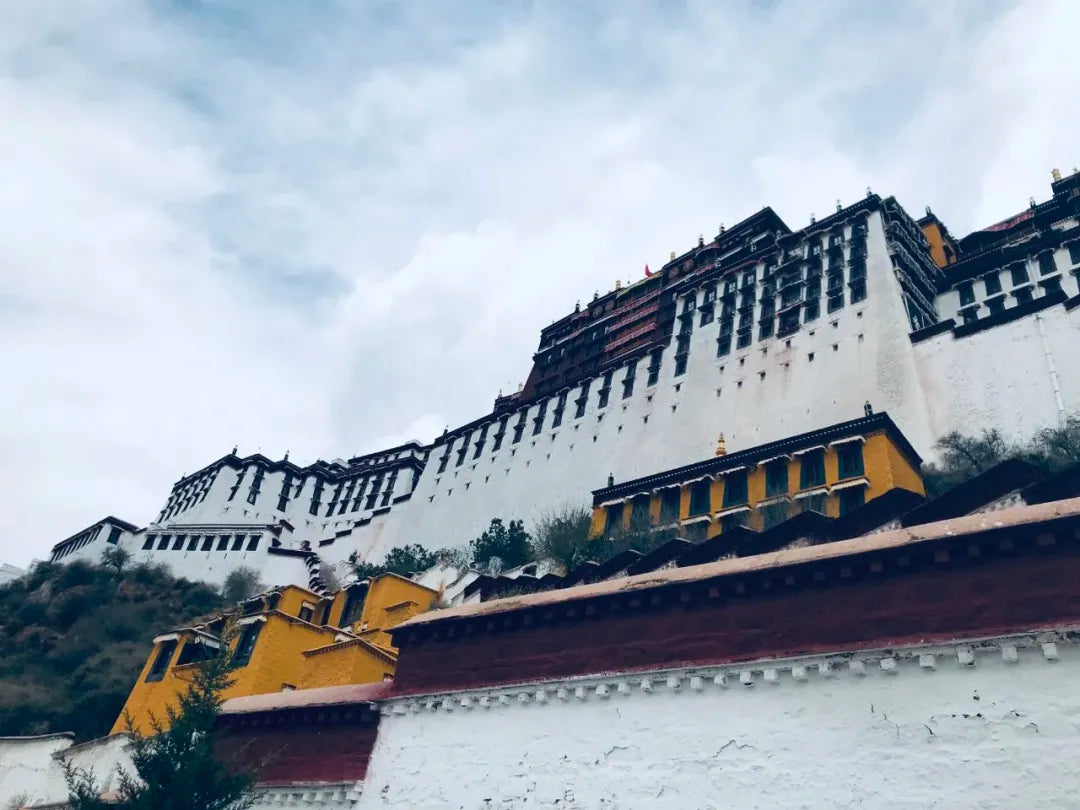
Southern Himalayans in Tibet ▎ An Outsider's View

Newar Merchants, photographed in 1932
Image Source: LHASA NEWAR FACEBOOK PAGE
Nepalese in Lhasa
To many, the idea of learning Nepali in Lhasa seems astonishing. Yet for me, it is merely a nostalgic endeavor—an attempt to revive, through language and cultural exchange, the historic Tibetan-Nepali ties once captured in black-and-white photographs, now reimagined in the vivid hues of the present.
From a third-party perspective, understanding the Nepali community living in the heart of the Tibetan plateau is no easy task. Neither particularly noticed by the local Tibetans nor the Han Chinese, they remain largely isolated, much like their diaspora elsewhere. Most struggle to communicate fluently, especially since many lack proficiency in both Mandarin and Tibetan. Worse still, this community has long lost the prestige once associated with Nepalis in Lhasa.
Once, while walking down a Lhasa street with two Nepali male friends, I overheard a passerby hurl vicious insults at them in Tibetan—crude, degrading slurs tied to the modern stereotype that Nepali men in the highlands are involved in sex work. This moment laid bare the harsh prejudices lurking beneath the city’s secular surface.

Mt. Annapurna / Fishtail Peak, photographed by the author in Nepal's Annapurna region, December 2018
Tibeto-Nepalese Exchange
Before the First Tibet-Nepal War, the connection between Tibet and Nepal had already evolved into a tightly-knit and complex web—encompassing trade, political relations, and even emotional bonds. The gold and silver craftsmanship of the Kathmandu Valley drew admiration from the northern slopes, while Lhasa’s prosperity and breathtaking landscapes captivated the hearts of those from the southern foothills.
Over time, even food became a testament to this deep cultural interplay. Dishes like the myriad Mo Mo that emerged in Nepali restaurants, or the curry rice (ཤ་འབྲས།) that swept across Lhasa and Ü-Tsang, stand as flavorful evidence of this enduring exchange.

Lhasa in Late Summer: A Sea of Emerald Green
—Photographed by the author at Lhasa Lukhang Park, September 2020
In the trans-Himalayan trade networks, the coinage minted in the Kathmandu Valley emerged as the primary monetary standard. The Gorkhalis, wielding significant economic and military dominance, extended their influence northward—a historical grievance that culminated in the 17th-century conflicts between Gorkha and Tibet, where currency sovereignty became a central point of contention.

Newar-style Pagoda Temple
Photographed by the author at Paba Temple, Gyirong County, Shigatse Region, September 2021
Here we must mention the pivotal figure—Shamarpa (ཞྭ་དམར་པ།) of the Karma Kagyu lineage, the 10th incarnation and younger brother of the 6th Panchen Lama.

The 10th Shamarpa (Zhwa-dmar-pa) of the Karma Kagyu Lineage
Shamarpa Chödrup Gyatso was the central controversial figure in the First Tibet-Nepal War. This Rinpoche, born and raised in Tsang, had remained in Kathmandu after the 6th Panchen Lama's passing in Beijing. Serving as Bahadur Shah's chief Tibetan advisor, he died by poisoning (some sources cite smallpox) at the hands of the Gorkhas after their military setbacks. His death gave King Shah the perfect pretext to blame him for all the failures since the war's outbreak.

One of the material remnants associated with the 10th Shamarpa at Swayambhunath Temple: a bronze hanging bell.
Religiously, the 10th Shamarpa left behind a profound evangelical legacy in Kathmandu. To this day, visitors can still discover numerous traces of his presence at Swayambhunath Temple.

Inscription Transcription from the Bronze Temple Bell
(Dedicated by the 10th Shamarpa)
The Shamarpa's contested legacy—condemned by some as betrayal of Tibet, yet woven through with his own lamentations of homesickness, love for his homeland, and exile's anguish—has all been carried away by the Bagmati's clear currents. What remains are but endless historical debates, and scars still tender on both slopes of the Himalayas.

Twilight at Swayambhunath
Photographed by the author in Kathmandu, Nepal, February 2023
My closest connections in Lhasa were with my Nepali language teacher, followed by the chef at the teacher's restaurant, and then the Deputy Consul of the Nepalese Embassy in Lhasa. Both my teacher and the diplomat were Brahmins, while the chef belonged to the Gurung ethnic group—in Lhasa, he was often mistaken for Mongolian or Han Chinese.


These kindred Nepalese faces mask a fascinating dichotomy: As Lhasa has transformed dramatically over the past century, traditional Himalayan ways of life have simultaneously adapted and reinvented themselves at this 3,600-meter elevation. (Image 2: A Lhasa bar scene capturing this cultural synthesis, photographed by the author in July 2022)
Tracing back to Nepal-Tibet trade a century ago, Newar merchants had already established themselves as remarkably astute businessmen in old Lhasa, forming the principal component of the Nepalese community throughout Tibet historically. Even before the 1650 Nepal-Tibet Treaty was signed, Newar traders had constructed numerous warehouses of considerable scale across various Tibetan regions.

Former site of the Nepalese Consulate in Tibet, now repurposed as a modern hotel"
(Photographed by the author, July 2021)
Merchant - Migrant Worker
In today's globalized economy, while Newar traders from the Kathmandu Valley remain the vanguard of Nepal's foreign commerce, the Nepalese diaspora in many regions—particularly the dominant community in Lhasa—now consists primarily of migrant workers rather than merchant elites.
These workers largely belong to mountain ethnic groups like the Magar, Tamang, and Gurung, with most engaged in silver/gold craftsmanship and service industries. Here lies a fascinating paradox: The innate gentleness and warmth characteristic of Nepalese people have become valuable assets in modern service sectors, yet the required deference in such jobs seemingly clashes with the nation's fierce collective pride. Upon closer observation, however, their kindness reflects personal dignity, while their sense of honor is wholly reserved for their ethnic and national identity.

Temal Jatra - A Tamang Memorial Ritual
Photographed by the author at Boudhanath Stupa, Kathmandu, Nepal, April 2023
From my observations, most Nepalese migrant workers endure substandard living conditions, earning comparatively low monthly wages in China. In high-cost Lhasa particularly, I would characterize their existence as subsisting at society's bottom rung. The majority remit their earnings via wire transfer to families back in the Himalayan foothills.

Rato Machindranath Jatra: The Red God's Chariot Festival
Photographed by the author in Lalitpur, Kathmandu Valley, April 2023
Among those traversing the Kathmandu-Lhasa corridor, one must not overlook the Nepalese Vajrayana Buddhist monks (primarily from Sherpa communities) residing in Lhasa. These clergy members regularly cross the Himalayan divide for pilgrimage and religious exchange, possessing remarkably diverse cultural fluency—typically mastering Nepali, Tibetan, basic English, and conversational Chinese.

Lo Gompas: Buddhist Monasteries of Mustang
Photographed by the author in Lo Manthang, Upper Mustang, Nepal, February 2023
In today's secular society in Lhasa, as mentioned at the beginning of the article, there is a considerable amount of locals who have some misgivings towards Nepalese people (especially Nepalese men); whereas in Kathmandu, the local residents also harbor certain prejudices against Tibetans (most believe that Tibetans lead highly spiritualized lives, and that they are generally straightforward, down-to-earth, and well-off; however, there are also some valley residents who view Tibetans as slightly "rough", but overall, the stereotypes from the southern slope seem to be a subconscious form of praise).

Mount Kailash, the Sacred Mountain
Photographed by the author in Darchen, Ngari Prefecture, August 2018
mixed-race person
In this way, the Nepalese-Tibetan people are more comfortable in balancing the two cultural heritages and daily lives of the south and north slopes, as they can engage in business and trade in Nepal on the southern slope, and form families with Tibetans on the northern slope (traditionally, they would prefer to choose partners of the same ethnic group); of course, another identity that needs to be mentioned in this context is the Tibetan-Nepalese mixed-race individuals.

A group photo of teachers and students at the Nepal School in Lhasa in the first half of the last century.
In popular perception, mixed-race children of Tibetan and Nepalese descent in Lhasa are typically considered to have a Nepalese father and Tibetan mother. In Tibetan language, there is a slightly derogatory term for this, "ཁ་ཙ་ར་" (khasar), which refers to these mixed-race individuals. In the past, when the economy was underdeveloped and transportation was relatively limited (especially before polygamy was banned by Nepalese law in the 1980s), "ཁ་ཙ་ར་" was also used to imply that these children were illegitimate offspring. In Lhasa society, they were often marginalized and seen as having impure bloodlines and lacking a formally recognized social status.

A glimpse of the Dashain festival, with ladies wearing Chupa. Captured by the author at the Consulate General of Nepal in Lhasa, October 2021.
Of course, there are many examples to prove that a considerable number of Tibetan-Nepali mixed-race children are the result of love between their parents and grow up in a warm and stable cross-cultural family. However, in most cases before the 1980s, at least one of the parents of Tibetan-Nepali children (usually the father) did not truly take on the parental role necessary for a strong and unique stable family.

Cityscape of Kathmandu in 1962, captured by Bishnu Das Pradhan.
"Lhasa Sweetheart"
Nepalese traders have a second family in Lhasa, a tradition long recognized as they cross the snowy mountains in the trade route between Kathmandu and Lhasa. My Nepalese male friends in Lhasa often talk about the ancient love affairs of Araniko, a Nepalese architect who was renowned throughout the northern slopes of the Himalayas and even to the Yuan Dynasty capital of Beijing over seven hundred years ago. It is said that during his stay in Lhasa, he had over a hundred lovers.
 The White Pagoda of Miaoying Temple in Beijing, designed and constructed by Anigo. Image source: Beijing Municipal Administration of Cultural Heritage
The White Pagoda of Miaoying Temple in Beijing, designed and constructed by Anigo. Image source: Beijing Municipal Administration of Cultural Heritage
 Tibetan mother, captured by the author in Lhasa, February 2021.
Tibetan mother, captured by the author in Lhasa, February 2021.
 《Radha and Krishna Walking in a Dense Forest of Flowers》19.1 x 11.1 cm, The Metropolitan Museum, LondonIn the Nepali lyrical epic "Muna and Madan", the author Lakximi Prasad Devkota portrays the traditional practice of Nepali merchants forming relationships with partners of the opposite sex while trading between the northern and southern slopes, and even potentially starting families on both sides of the mountain range. Fortunately, the protagonist Madan remains faithful to his wife Muna. However, in reality, how many Munas are there on the other side of the Himalayas, waiting tearfully for their Madans in emotional despair and economic hardship?
《Radha and Krishna Walking in a Dense Forest of Flowers》19.1 x 11.1 cm, The Metropolitan Museum, LondonIn the Nepali lyrical epic "Muna and Madan", the author Lakximi Prasad Devkota portrays the traditional practice of Nepali merchants forming relationships with partners of the opposite sex while trading between the northern and southern slopes, and even potentially starting families on both sides of the mountain range. Fortunately, the protagonist Madan remains faithful to his wife Muna. However, in reality, how many Munas are there on the other side of the Himalayas, waiting tearfully for their Madans in emotional despair and economic hardship?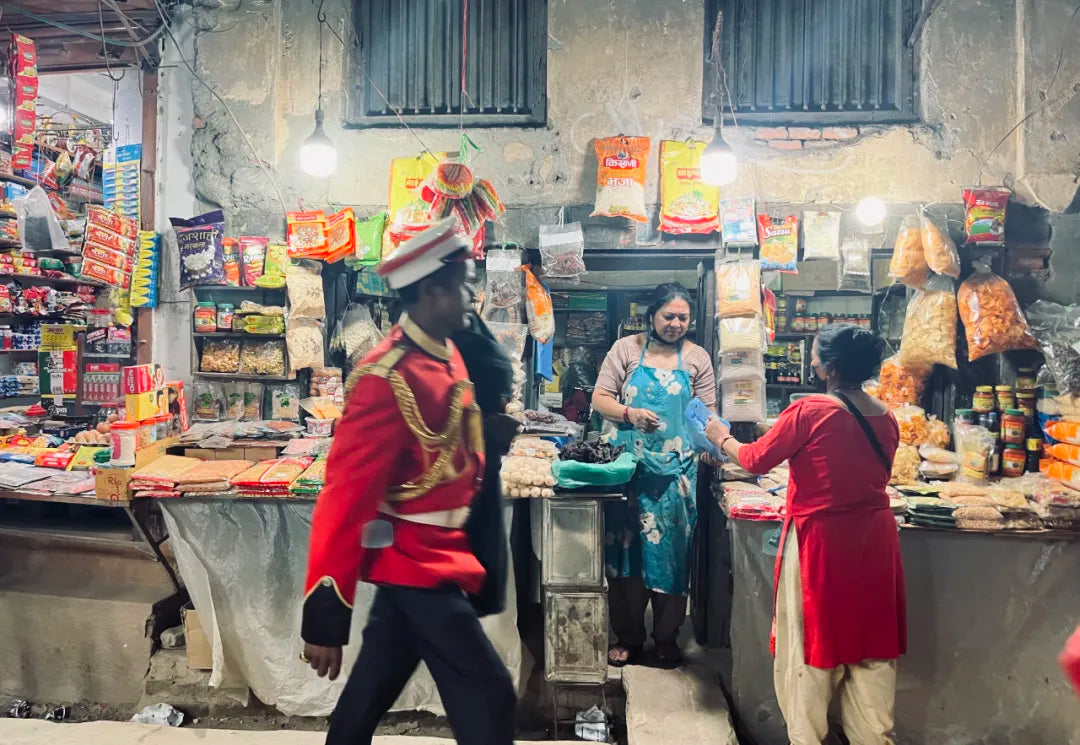 A traditional night market in the Newar community, where a wedding musician is passing by two women engaged in market trade.
A traditional night market in the Newar community, where a wedding musician is passing by two women engaged in market trade.Photographed by the author in Indrachok, Kathmandu, May 2023.
Diet culture and national self-esteem
 Invited to have a "New Year's Eve meal" at a Nepalese restaurant, including traditional Nepalese dishes such as Dal (lentil soup), Chiura (beaten rice), Aloo Dum (spicy fried potatoes), Bodi (fried black-eyed peas), etc. This photo was taken by the author in Lhasa on December 31, 2021.
Invited to have a "New Year's Eve meal" at a Nepalese restaurant, including traditional Nepalese dishes such as Dal (lentil soup), Chiura (beaten rice), Aloo Dum (spicy fried potatoes), Bodi (fried black-eyed peas), etc. This photo was taken by the author in Lhasa on December 31, 2021.
 The silhouette of the Mahashivaratri night procession, captured by the author at the Pashupatinath Temple in Kathmandu, February 2023.
The silhouette of the Mahashivaratri night procession, captured by the author at the Pashupatinath Temple in Kathmandu, February 2023.
 In July 2022, with the help and permission of my diplomat friend, I was able to enter the shrine set up in the Consulate General of Nepal in Lhasa, where the Sanskrit manuscript of the Bhagavad Gita was brought to the snowy heights.
In July 2022, with the help and permission of my diplomat friend, I was able to enter the shrine set up in the Consulate General of Nepal in Lhasa, where the Sanskrit manuscript of the Bhagavad Gita was brought to the snowy heights.
My understanding of Nepal began with modern art. In my art history class, I noticed the works created by two contemporary artists, ultimately leading me into this chaotic and mystical South Asian country as guided by Mr. Asha Dangol and Ms. Rajini Uphadhaya Grela in the textbooks.
 "Woman," by Rajini Uphadhaya Grela, 1999, collection of Fukuoka Asian Art Museum, Japan, with catalog number no. 1718.
"Woman," by Rajini Uphadhaya Grela, 1999, collection of Fukuoka Asian Art Museum, Japan, with catalog number no. 1718.
 "Tantro's Dance", Asha Dangol, 2005
"Tantro's Dance", Asha Dangol, 2005
In December 2022, the epidemic that had been spreading in Lhasa for over four months finally ended, and my Nepali friends in Lhasa, whom I was most familiar with, returned to their homeland by land from the border areas. There will always be new Nepali people coming to Lhasa, but these familiar faces that I have known will no longer be seen in Tibet.
Snowland Memories
What I have always been curious about is how these Nepalese people, who travel back and forth between the snow-covered mountains, record their family ties that can only be found in Kathmandu, digest their memories specific to the snowy regions, and how they soothe the pain that cannot be understood in a foreign land, how they maintain the love that is intertwined on both sides of the Himalayas.
 The majestic Great Stupa, captured by the author in Kathmandu, Nepal, in April 2023.
The majestic Great Stupa, captured by the author in Kathmandu, Nepal, in April 2023.
Like countless Tibetans, like countless pilgrims to the Land of Law, they have passed by the foot of the Red Mountain countless times, and looked up at the Potala Palace countless times - this palace, which has historically carried countless treasures crafted by Nepalese artisans, has also responded to how many tears and smiles left by these Nepalese people on the plateau?
 The Potala Palace in the snow after the storm, captured by the author at the foot of Red Mountain in Lhasa City, April 2019.
The Potala Palace in the snow after the storm, captured by the author at the foot of Red Mountain in Lhasa City, April 2019.
eturning to the description of Muna and Madan, with the same pure and fervent feelings as the author Devkota towards the northern slope, we can only believe that for thousands of years, these people from the warm domain of the southern slope have had an expectation and love for Lhasa city and the snowy peaks, just like the snow on the top of the Himalayas, pure and steadfast:
"The golden peak of Potala Palace shines brightly in the night,
the majestic city of Lhasa lies at the foot of the Red Palace, smiling softly."
It is a beautiful, lush and shimmering Lhasa located in the heart of the plateau.
This article is translated from Devkota's blog.


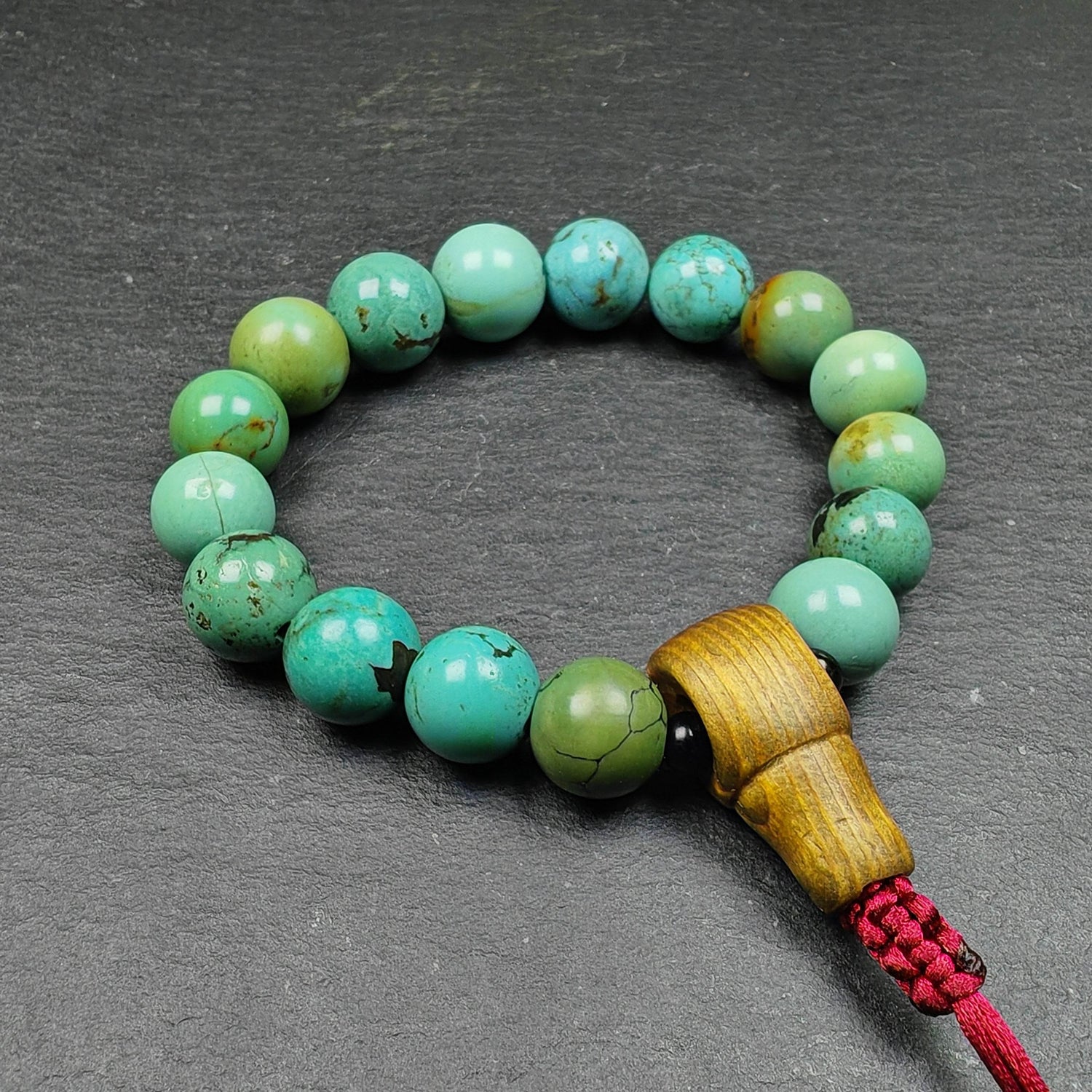
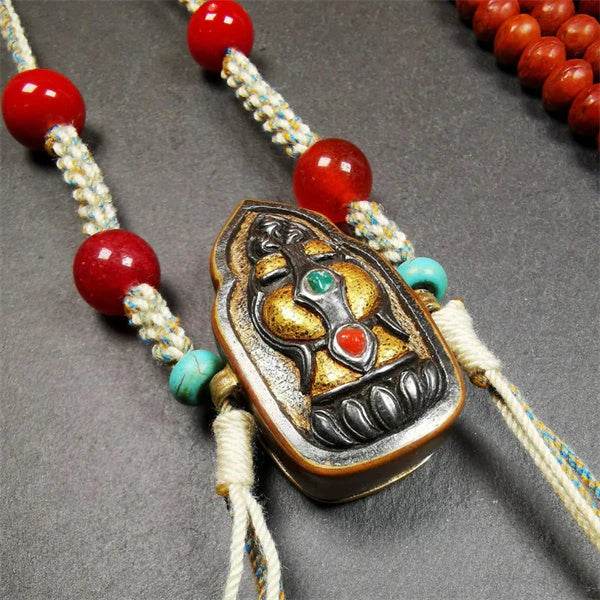

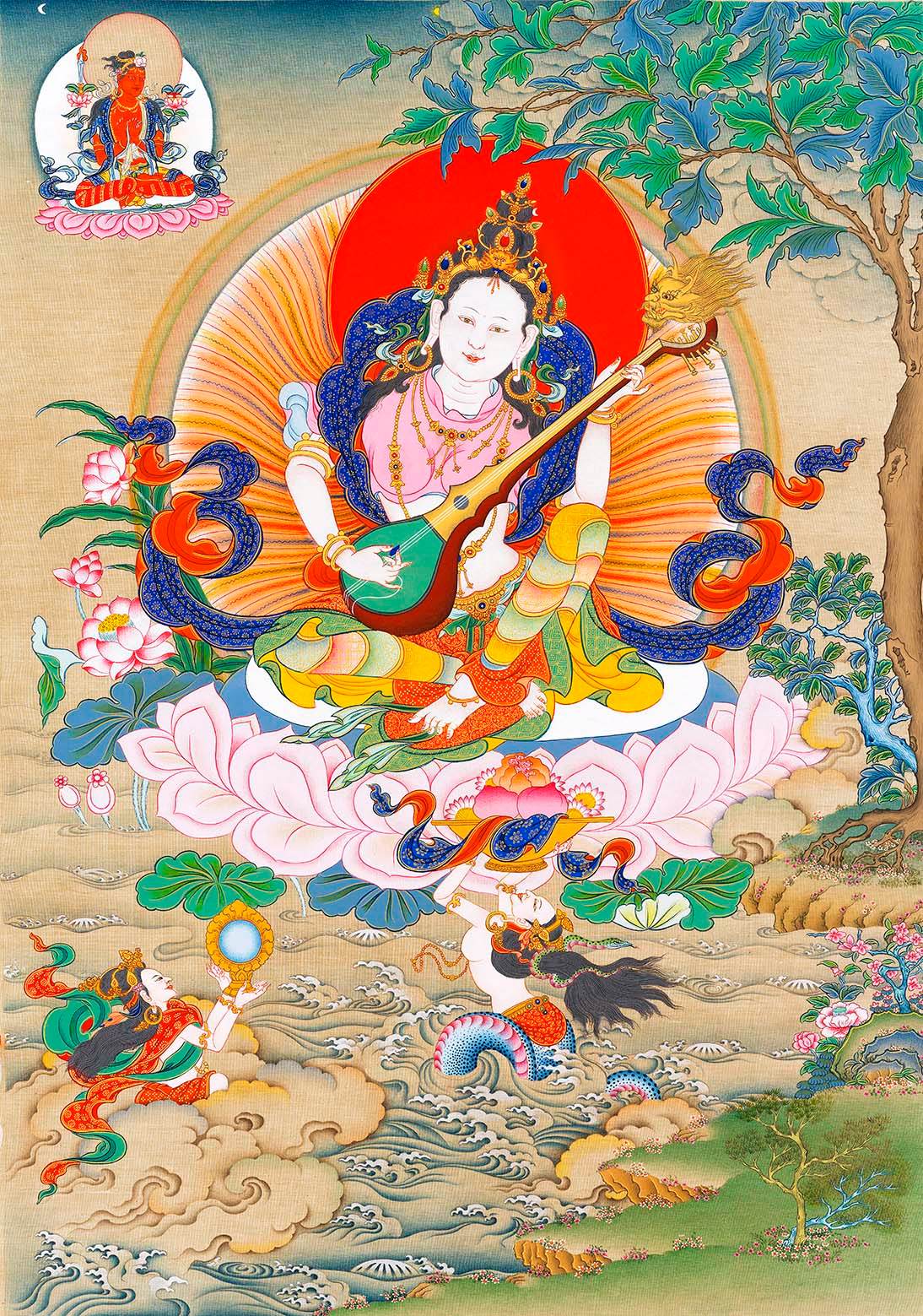

1 comentario
pWSHn pAC uUOkqsNj cGSNtxc EchFUhf